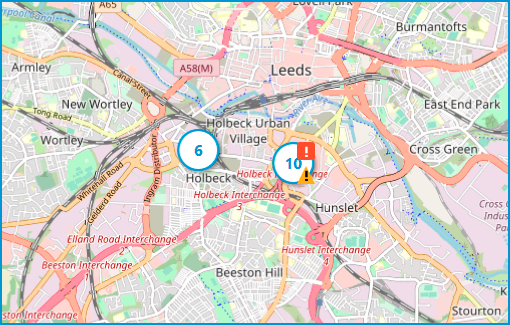Maps🔗
Note
This feature is available only for Enterprise and ULTRA licenses.
Eocortex allows placing and interacting with cameras, sensors, and relays on the geographic maps provided by the following map services: Google Maps and OpenStreetMap.
To get access to the Maps section, select the  Maps item in the main menu.
Maps item in the main menu.
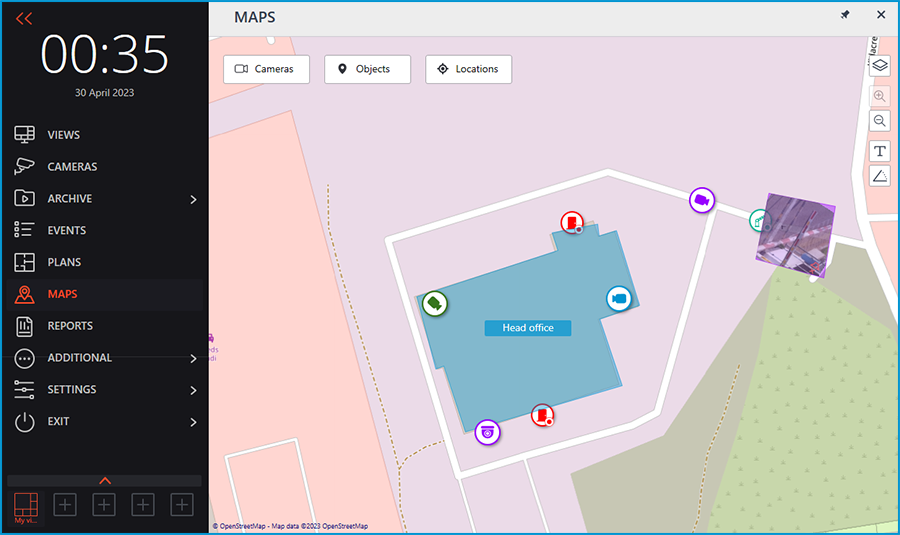
A bar with the following buttons is available on the right side of the map:
Change layer: Changes the current map layer.
Zoom in: Scales the map up.
Zoom out: Scales the map down.
Note
The scale can also be changed with the mouse wheel.
Show camera names: Hides or displays the names of all cameras on the map.
Show fields of view: Hides or displays the field of view of all cameras on the map. If no fields of view are configured, this button will not be displayed on the panel.
Open in the optimal grid: Creates a view from the cameras selected on the map. If no cameras are selected, this button will not be displayed in the panel.
The Cameras, Objects, Locations, and Alarms buttons are available at the top of the screen. Clicking the button opens a slide-out panel on the left with the relevant information.
Cameras
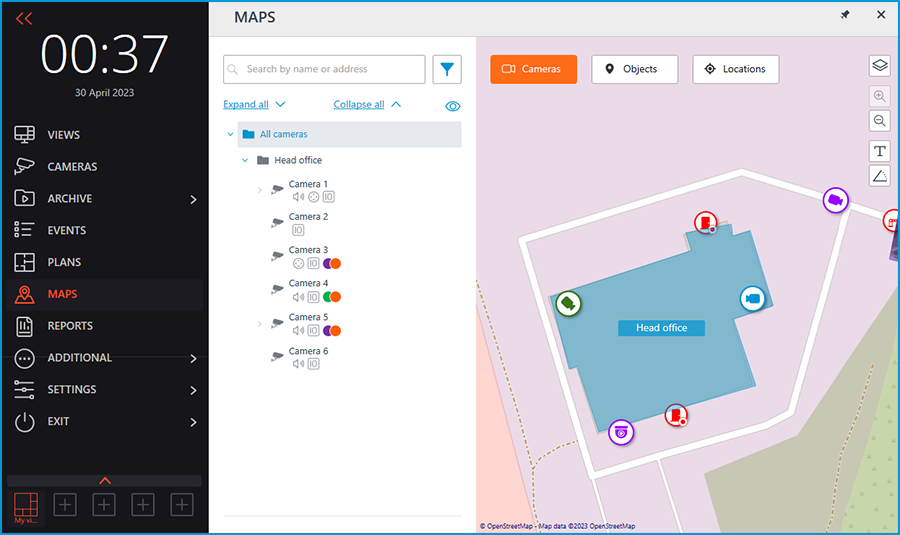
This tab contains the cameras tree.
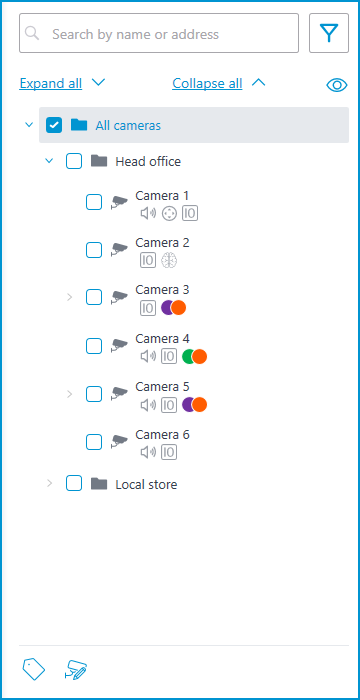
Cameras can have the following attributes:
: the camera has enabled video analytics module;
: the camera has enabled sound receiving option;
: the camera has enabled PTZ;
: the camera has enabled alarm inputs/outputs.
Colored labels: the camera has tags with the displayed colors;
If necessary, the attributes can be hidden by clicking the icon on the right side of the tree.
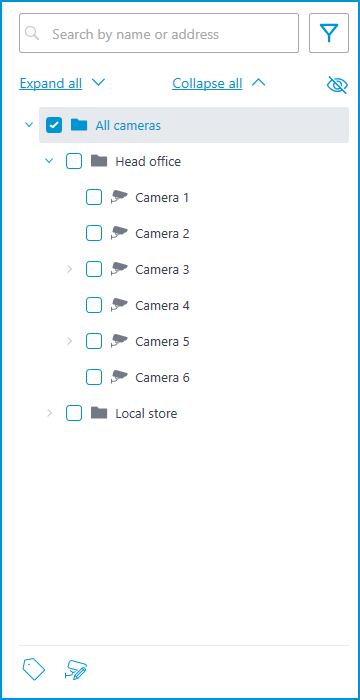
Hovering the cursor over the camera opens a preview window that contains video from the camera and a list of its attributes.
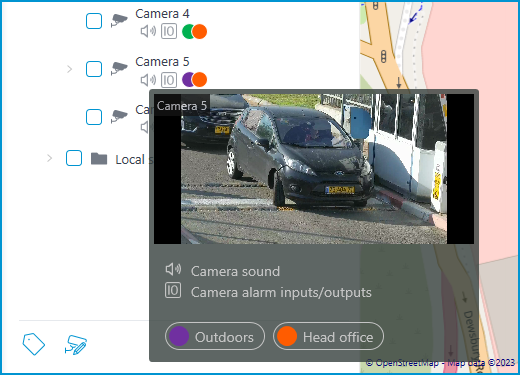
The same preview window opens when hovering the cursor over a camera located outside the cameras tree.

In addition to selecting a camera manually, it can also be found by name or IP address using the search field above the cameras tree.
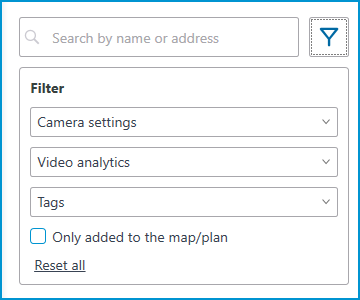
Cameras can be filtered by clicking the icon and customizing the following filter options:
Camera settings Filter by the following attributes:
,
,
.
Video analytics
Tags
Note
The availability of filtering options depends on the settings of the cameras. Filtering applies immediately after selecting an item.
If necessary, the filtering can be collapsed by clicking the filter button. When the filtering is applied and collapsed, the filter icon changes to
To quickly go to the camera placed on the map, select it in the list and click the Show on map item in the context menu. The same method works for the sensors and relays located on the map.

Alternatively, it is possible to go to the camera on the map by selecting Show on map in the context menu of the camera cell. This option can be used both when viewing live video and from the archive, including simultaneous playback of the archive of multiple cameras.
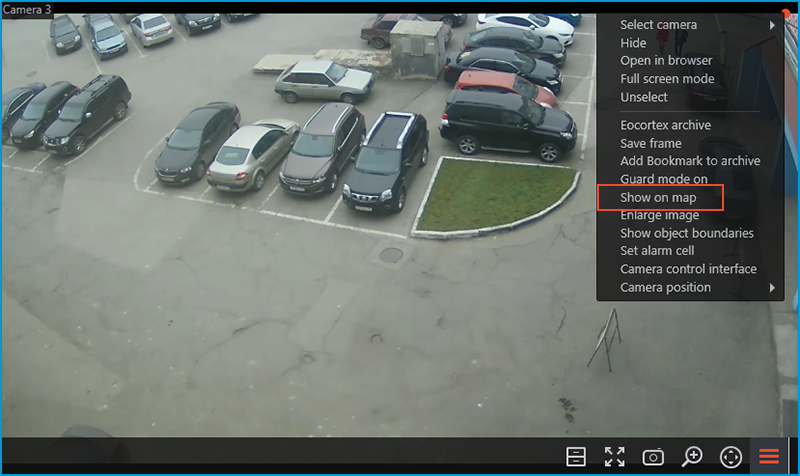
When a camera is selected on the map, the following buttons will pop up around the camera:
Viewing video from the camera in full-screen mode
Viewing the camera in the tree
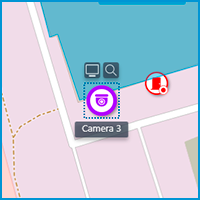
Note
Also, when a camera is selected, its name will be displayed. By default, it is hidden.
It is possible to display video in the field of view with the proper setting of the camera.

When selecting one or multiple cameras, a new client view can be created that contains the selected cameras. To select multiple cameras, hold the right mouse button and stretch the rectangle to capture all the needed cameras.
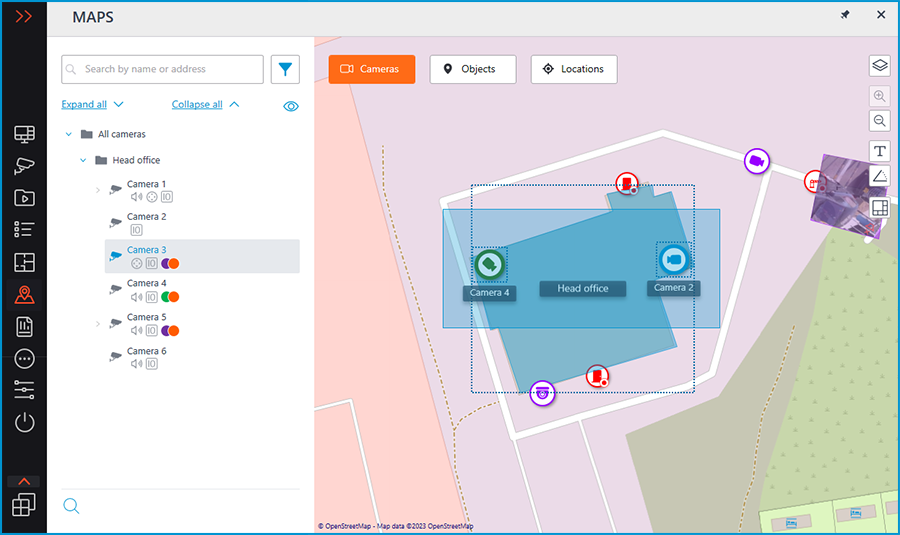
To create a view made up of the selected cameras, click the button.

In addition to cameras, the map can display sensors and relays attached to the alarm inputs and outputs of cameras.
The state of the sensors and relays indicates with its color: red — off, green — on.

When the scale of the map is changing, cameras, sensors, relays, and objects on the map can be clustered into the group markers.
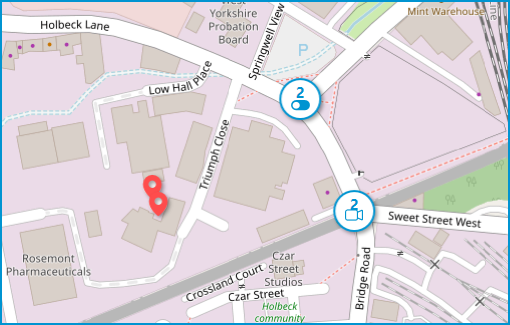
Elements of the same type located close to each other on the map are grouping into one marker with the number of grouped elements and their type: camera, sensor, relay, or object.

Elements of different types are grouping into one marker with the number of devices.
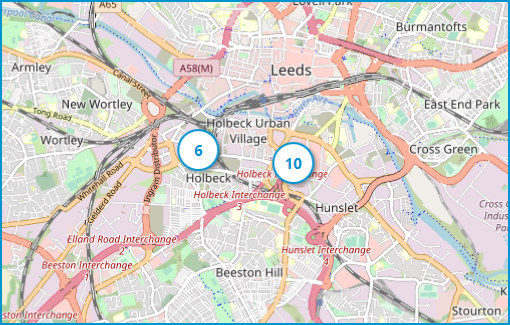
Note
If the number of grouped elements is more than 99, the number on the marker will be displayed as 99+.
Objects
This tab displays the objects tree. An object is an area on the map that can be used to navigate to the Plans view.
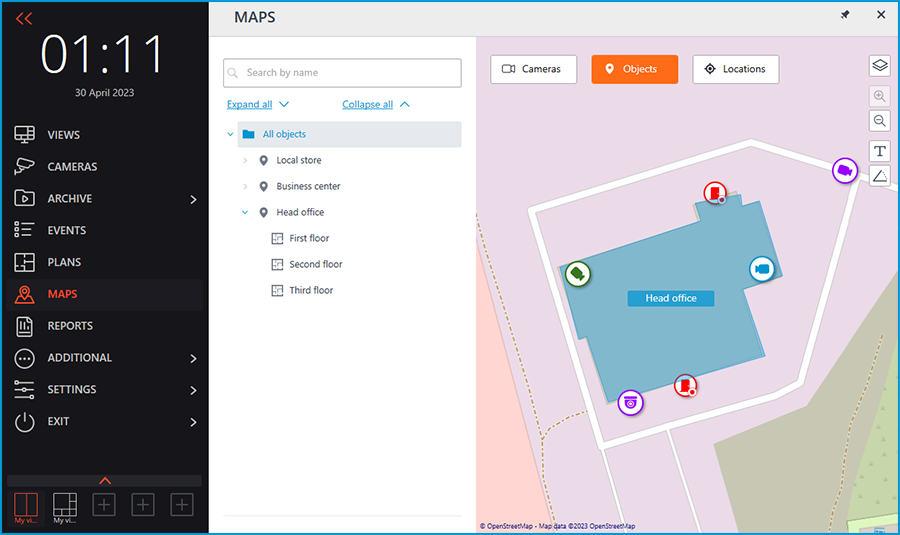
If any plans are attached to the object, the tooltip with a list of attached plans will be displayed when hovering the cursor over the object.
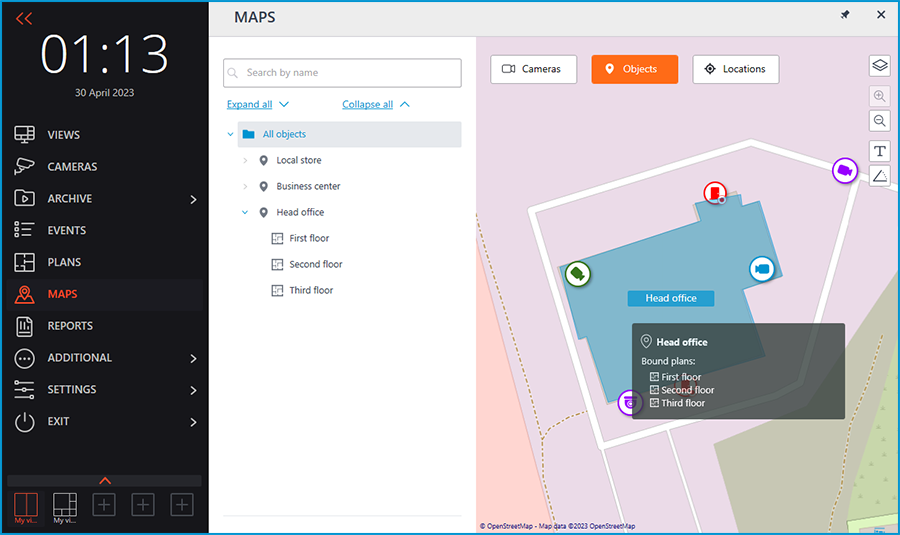
Note
If more than 10 plans are attached, the first 10 plans are displayed and the number of other plans is shown below.
To go to the Plans section, select the object and click the Switch to plans button.
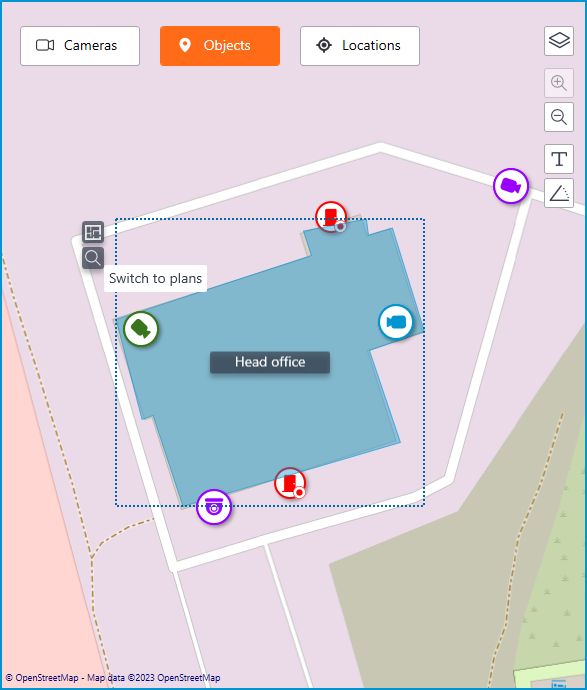
Clicking this button will display a tree of plans attached to the object.
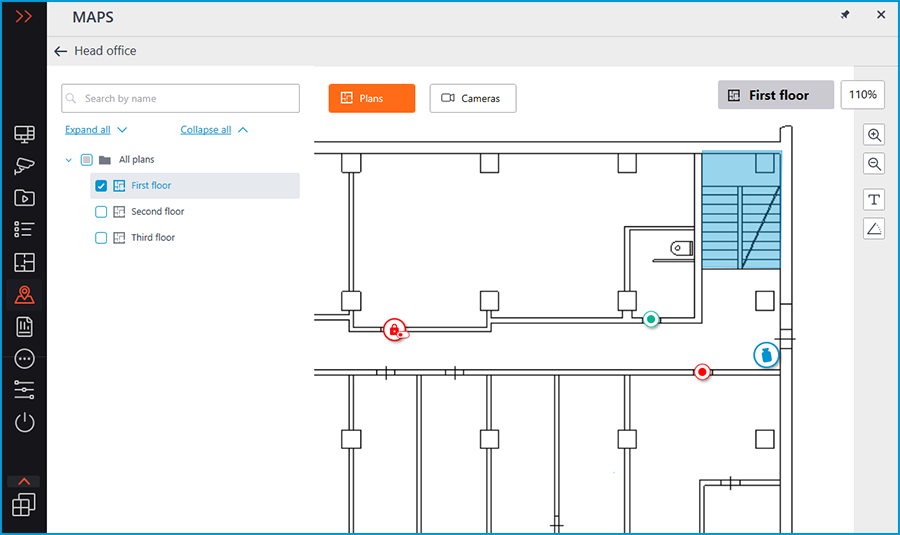
The header of the window displays the name of the object from which the window was switched to the Plans section and the Back arrow to go back to the Maps section.
Locations
Locations allow jumping to a preset area on the map with the specified scale.
This tab displays the locations tree, with which it is possible to quickly switch to the configured locations on the map.
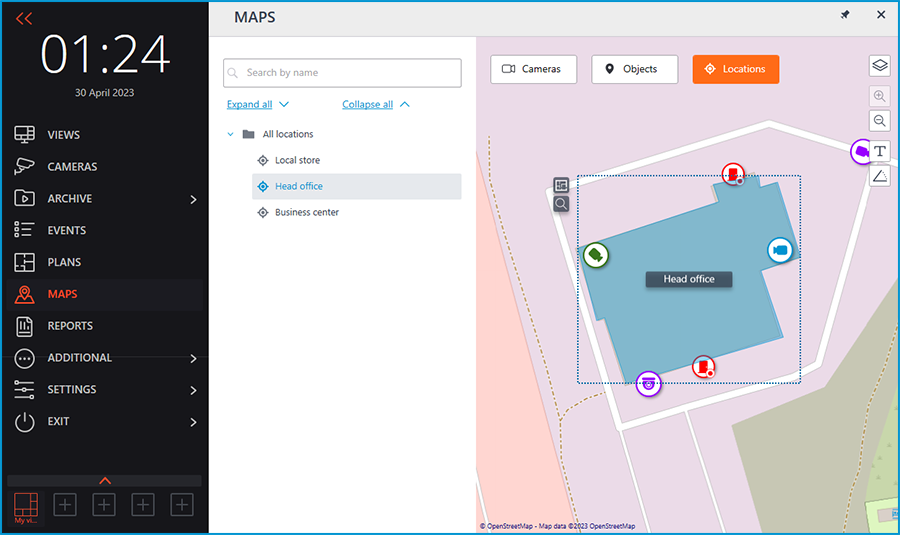
Alarms
To enable displaying camera alarms, activate the Guard mode option in the Show alarms on plans and maps section of the workplace settings.
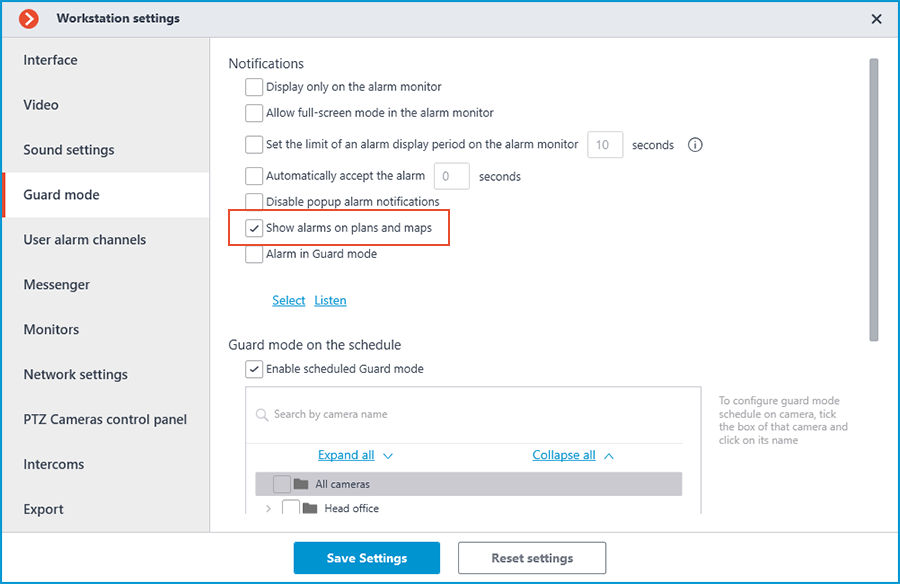
This tab displays alarms from all cameras.
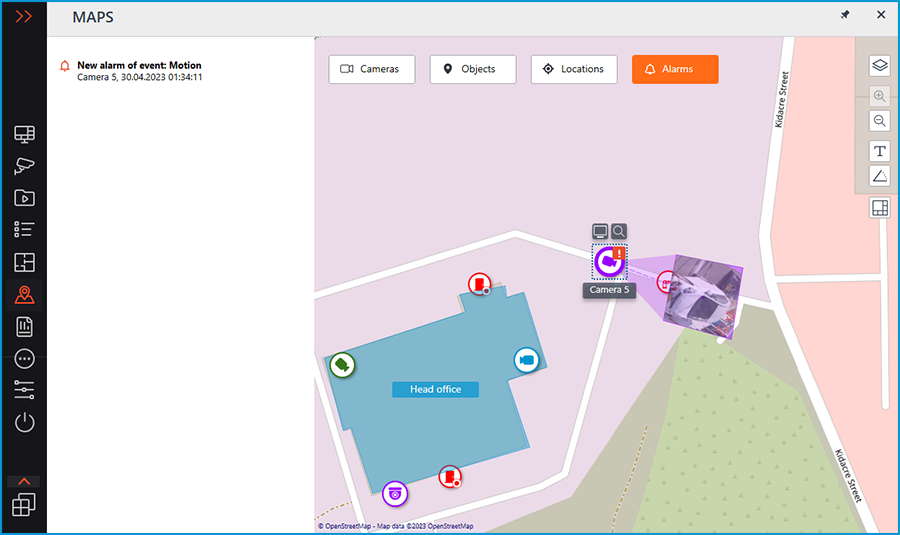
In addition to the alarm indicators, the cameras on the map may also have indicators of a broken or missing connection with the camera.
Alarms are indicated with a red square, broken or missing connection with a yellow triangle. When placing the cursor on the alarm indicator, the event that caused it will be shown.
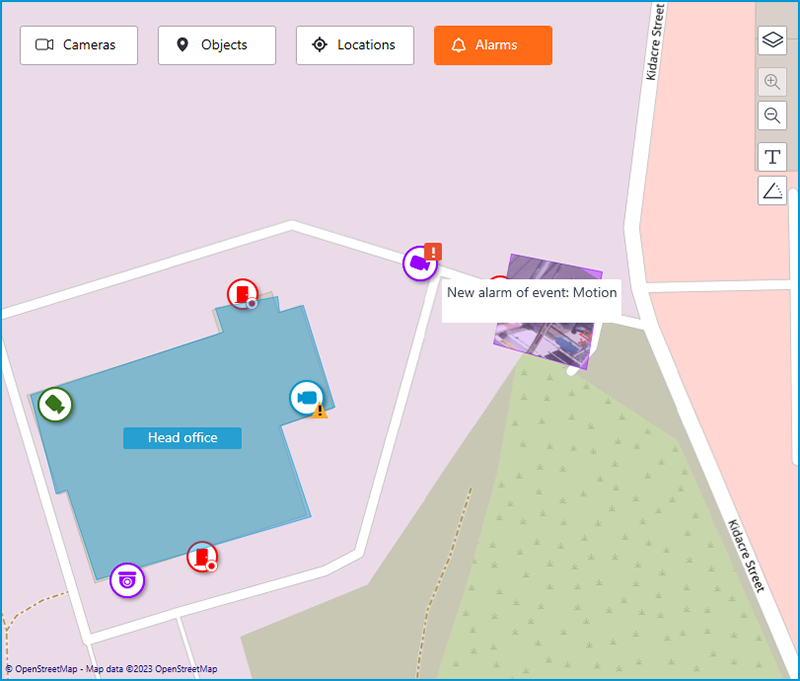
Note
When the connection with the camera is broken, the alarm indicator will be hidden. When the connection is restored and the alarm has not been acknowledged yet, the alarm indicator will be displayed again.
These indicators can also be displayed on plans and objects:
On a plan
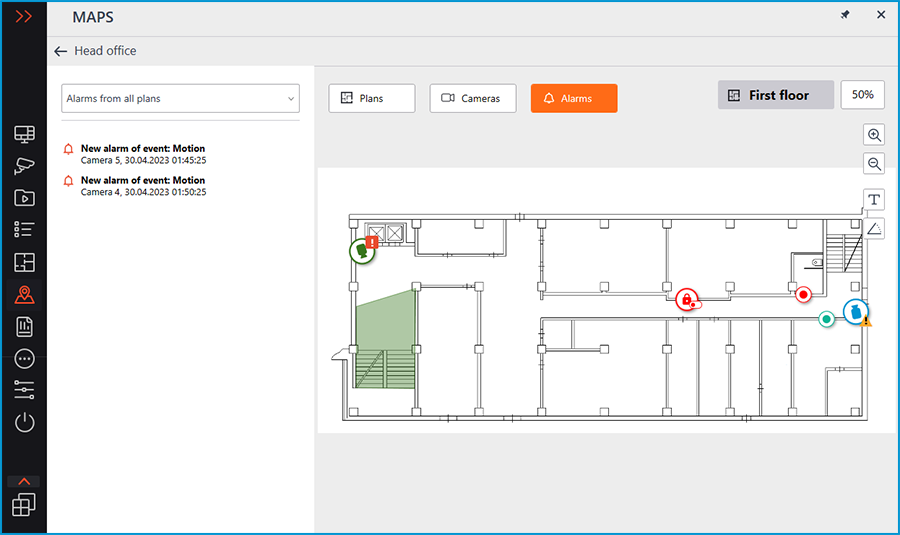
On the object
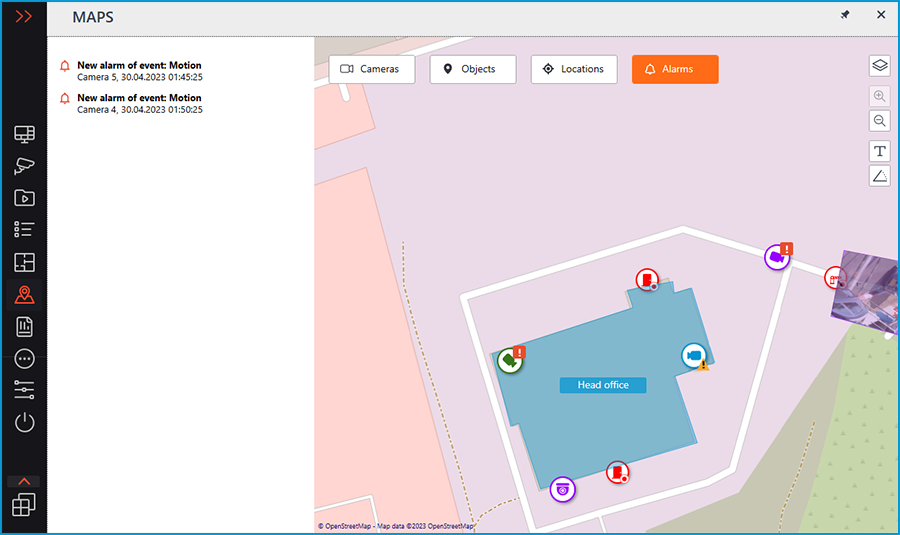
Grouped camera markers also have alarm indicators. If the group contains cameras with an alarm and cameras with a broken or missing connection, both indicators will be displayed.
